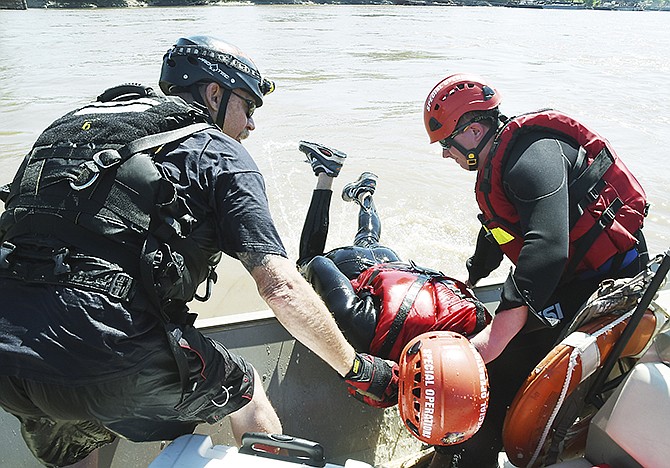During flooding last December in the Lake of the Ozarks and recently in Texas, firefighters have been involved in several rescues of people stranded in vehicles or along the banks of lakes and rivers.
Many fire agencies have boats, but their crews do not have the specific skills to recognize their operating limitations. A number of recent high-profile failed boat operations, which endangered the crews and in some instances lead to the deaths of crew members and civilians, highlight the need for such training.
To make sure their skills are honed, 20 firefighters, including a group from the Jefferson City Fire Department, are spending the next few days practicing on the Missouri River.
It's one of the 19 courses offered during this year's University of Missouri Summer Fire School and the Midwest Wildfire Training Academy.
"What we're doing is showing how to maneuver boats around so they can get to victims," said Larry Young, a 23-year veteran of the Kansas City Fire Department and one of the instructors at the school. "We use both rigid and jon boats, as well as pontoon-like boats so they get the experience with both types."
Young said the techniques being shown in this training are similar to what crews do in swift-water rescue training where they practice skills like tying and using ropes in rescue situations.
This course, which has been taught to fire personnel internationally, also involves whitewater rafting skills with participants learning launching procedures, what happens when a boat flips and re-righting it, as well as high-speed turns and pick-ups.
Instructors teach emergency personnel to evaluate every situation, make decisions quickly and create multiple plans that can adapt to changing conditions.
"One of the main things we're teaching here is how to the use the boat as a rescue platform and being able to navigate around debris, which you see a lot of in the river," Young said.
Young said they will be out on the river one night so the participants can get an idea of what to do in that scenario.
While flooding might not seem as dangerous as other natural disasters, as recently as 2011 the National Weather Service reported a yearly average of 92 flood-related deaths since 1981. That surpasses the annual averages of 56 deaths from tornadoes and 55 from lightning.

